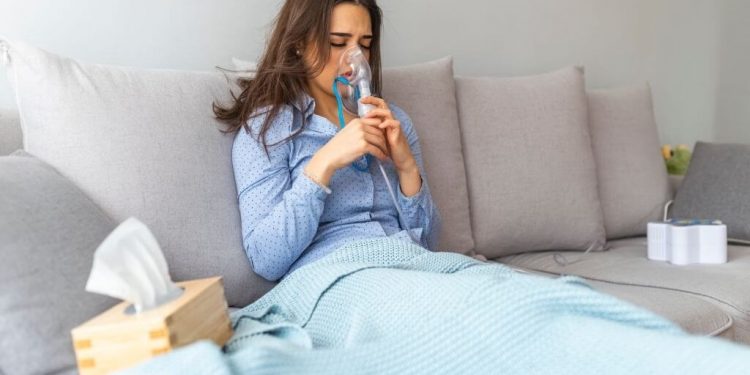A new study suggested that the phenomenon of happy hypoxia, also called hypoxemia experienced by people with COVID-19, can be utilized to explain the fundamentals and principles in respiratory physiology.
The COVID-19 pandemic has led to several new pieces of research, and still, questions are arising that require answers. The prevalence of hypoxemia among people with COVID-19 has been a mystery.
It refers to the decrease in the partial pressure of oxygen levels in the blood, which leads to shortness of breath (dyspnea). In the worst-case scenario, when the blood oxygen levels fall below an optimum level, the body suffers organ damage, and it can be fatal.
A study published in the American Journal of Respiratory and Critical Care Medicine might assist medical professionals in managing and providing care to severe cases of coronavirus. In some patients, the blood oxygen level falls at low values, and the lungs do not have enough oxygen to absorb or to provide for organs in the body.
On the other hand, some people with coronavirus have low blood sugar levels but still can function with no severe complications and breathing problems. As per the authors of the study, Tobin, Laghi, and Jubran,
“The condition is especially bewildering to physicians and is considered as defying basic biology.”
According to Dr. Martin Tobin from Loyola University Medical Center (Maywood), there are situations when the COVID patient feels comfortable when he is being tested, or a breathing tube is inserted. Although, the patient is connected to the mechanical ventilator at the point that is, however, a lifesaver with potential risks.
To understand the reason, Dr. Tobin and his colleagues conducted an informal survey from healthcare workers regarding their patient’s experience of happy hypoxemia.
The data analysis showed that the reports of silent hypoxemia are better explained with conventional respiratory science. When the pulse oximeter shows an accurate oxygen reading, there is a chance of exaggerated severity of low oxygen levels. As Dr. Tobin points that,
“As oxygen levels drop in patients with COVID-19, the brain does not respond until oxygen falls to deficient levels, at which point, a patient typically becomes short of breath.”
Moreover, the patients experiencing silent hypoxemia have low levels of carbon dioxide, and that leads to the reduction of low oxygen in the blood. It can also explain the reason for the symptoms of lack of smell in the coronavirus patients.
“It is also possible that the coronavirus is exerting a peculiar action on how the body senses low levels of oxygen.”
The rise and spread of COVID-19 across the world have a lack of information and effective treatment strategies for scientists and clinicians. Future treatment plans are gathering data from real-world and research to lower the number of infections and deaths due to coronavirus. As quoted by Dr. Tobin,
“This new information may help avoid unnecessary endotracheal intubation and mechanical ventilation, which presents risks when the ongoing and much anticipated rescind wave of COVID-19 emerges.”
It is essential to understand the mechanism of COVID-19 and treatment to enhance the patient’s care to have resources for the anticipated second wave of coronavirus.












